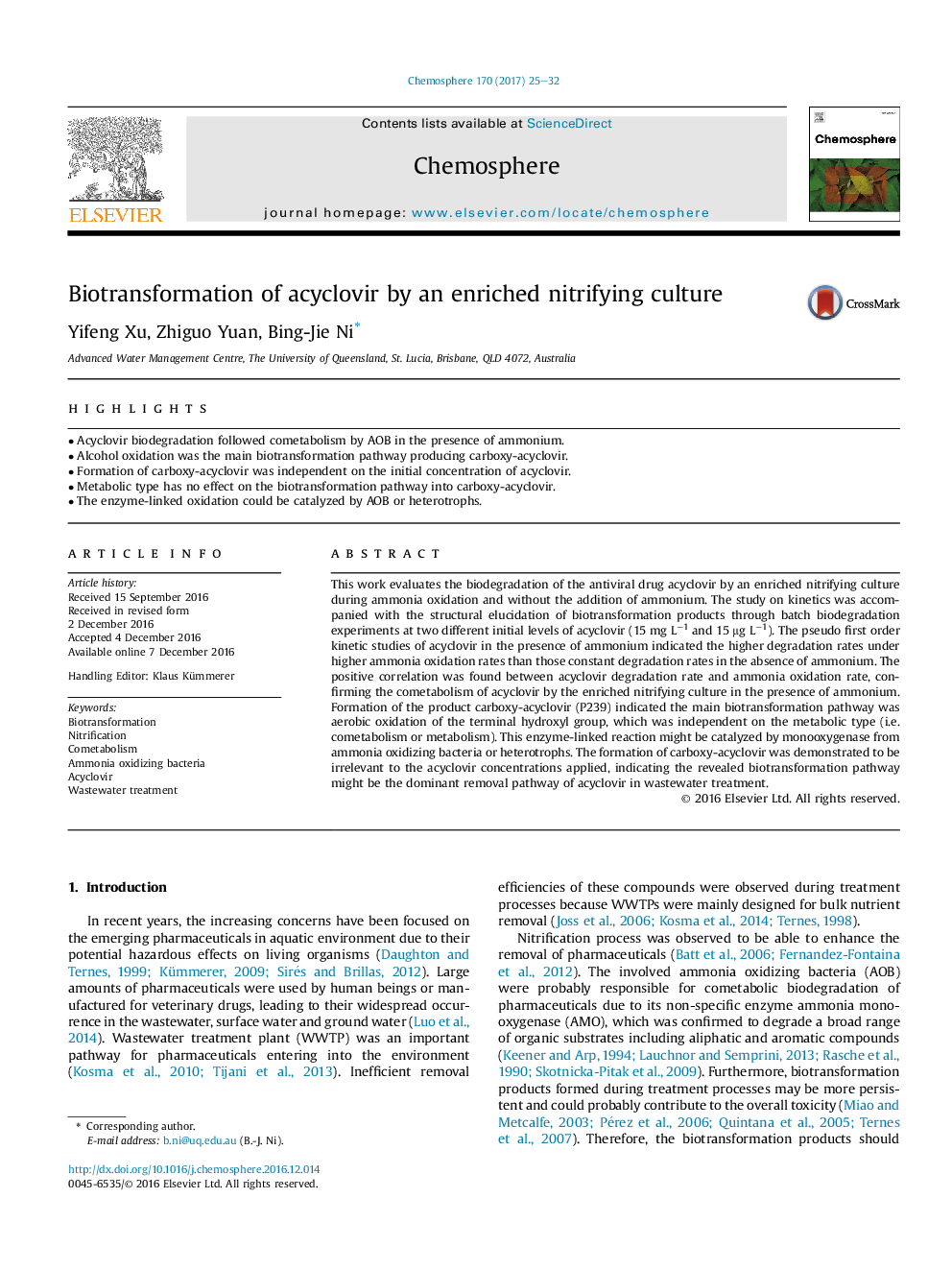| Article ID | Journal | Published Year | Pages | File Type |
|---|---|---|---|---|
| 5746789 | Chemosphere | 2017 | 8 Pages |
â¢Acyclovir biodegradation followed cometabolism by AOB in the presence of ammonium.â¢Alcohol oxidation was the main biotransformation pathway producing carboxy-acyclovir.â¢Formation of carboxy-acyclovir was independent on the initial concentration of acyclovir.â¢Metabolic type has no effect on the biotransformation pathway into carboxy-acyclovir.â¢The enzyme-linked oxidation could be catalyzed by AOB or heterotrophs.
This work evaluates the biodegradation of the antiviral drug acyclovir by an enriched nitrifying culture during ammonia oxidation and without the addition of ammonium. The study on kinetics was accompanied with the structural elucidation of biotransformation products through batch biodegradation experiments at two different initial levels of acyclovir (15 mg Lâ1 and 15 μg Lâ1). The pseudo first order kinetic studies of acyclovir in the presence of ammonium indicated the higher degradation rates under higher ammonia oxidation rates than those constant degradation rates in the absence of ammonium. The positive correlation was found between acyclovir degradation rate and ammonia oxidation rate, confirming the cometabolism of acyclovir by the enriched nitrifying culture in the presence of ammonium. Formation of the product carboxy-acyclovir (P239) indicated the main biotransformation pathway was aerobic oxidation of the terminal hydroxyl group, which was independent on the metabolic type (i.e. cometabolism or metabolism). This enzyme-linked reaction might be catalyzed by monooxygenase from ammonia oxidizing bacteria or heterotrophs. The formation of carboxy-acyclovir was demonstrated to be irrelevant to the acyclovir concentrations applied, indicating the revealed biotransformation pathway might be the dominant removal pathway of acyclovir in wastewater treatment.
